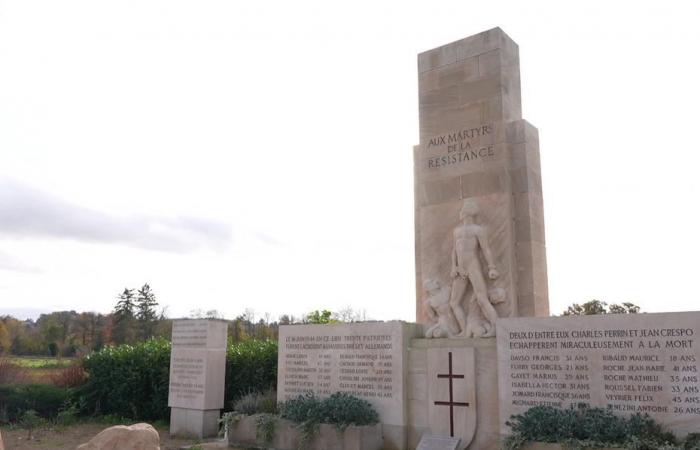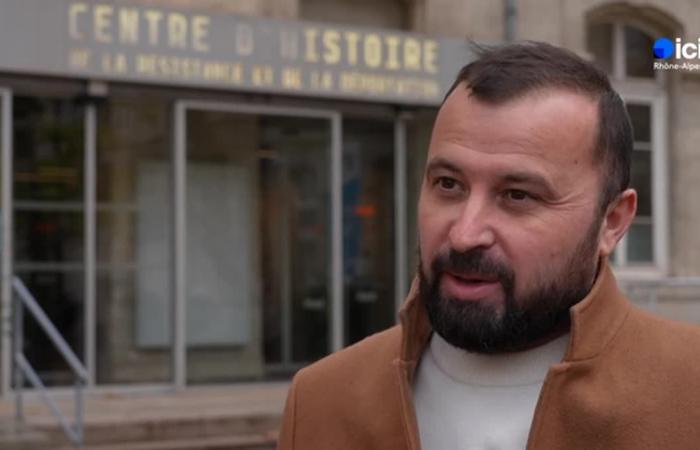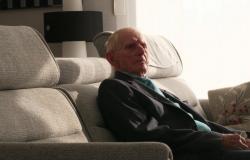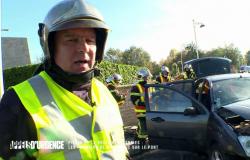Emmanuel Macron announced this Saturday in Strasbourg his desire to bring Lyon historian and resistance fighter Marc Bloch into the Pantheon. An announcement which comes 80 years after his execution by the Nazis in Saint-Didier-de-Formans, a small village in Ain.
The essentials of the day: our exclusive selection
Every day, our editorial team reserves the best regional news for you. A selection just for you, to stay in touch with your regions.
France Télévisions uses your email address to send you the newsletter “Today’s essentials: our exclusive selection”. You can unsubscribe at any time via the link at the bottom of this newsletter. Our privacy policy
Emmanuel Macron announced, Saturday November 23, his desire to bring into the Pantheon, Marc Bloch, historian involved in the Resistance and shot by the Gestapo in June 1944.
Historical forgetting
“Marc Bloch is one of these giants of French history, of the history of the Republic, of the history of the Second World War too. In 2006, in a petition, all the great French historians requested entry from Marc Bloch at the Pantheon to Jacques Chirac It remained a dead letter. Seeing him enter the Pantheon today is the repair of a historical oversight.explained the historian and writer Stéphane Nivet the day after Emmanuel Macron's announcement. “He is the first historian to enter the Pantheon.”
This future pantheonization is also the culmination of a fight for recognition in the small Aindin commune of Saint-Didier-de-Formans. “I was only waiting for one thing: for the President to finally announce it. I knew this day was coming.” entrust Frédéric Vallos, the mayor. The Indinois elected official does not hide his emotion.
He will be the 84th to enter the Pantheon. It is the supreme symbol of the recognition of the Nation. Marc Bloch embodies the values of the Republic and this is what we want to pass on to future generations.
Frédéric VallosMayor of Saint-Didier-de-Formans (Ain)
Last year, Frédéric Vallos obtained assurance that Marc Bloch would be the next great man to enter the Pantheon. If the chosen one is so upset, it is because it was in his commune that Marc Bloch was assassinated in 1944 with 29 other resistance fighters. The mayor also knows Daniel Bloch well, the son of the resistance historian, now 98 years old.. He has accompanied him in his efforts for several years. “I spoke to him on the phone, he is moved and proud. It’s the fight of a lifetime for him,” adds the city councilor.
The mayor of Saint-Didier-de-Formans, in front of the memorial which pays tribute to the 30 shot on June 16, 1944.
•
© France tv
Fervent republican, resistance fighter and martyr
Born in Lyon in 1886, Marc Bloch grew up in an Alsatian Jewish family who chose France. He was a brilliant student, Normalien, associate professor of history and geography, teacher and recognized medievalist. He was also the father of a new historical approach. A former poilu, anti-fascist, patriot and fervent republican, Marc Bloch was mobilized at his request in 1939. This father of six children was then 53 years old. The capitulation inspires this soldier historian to write “The Strange Defeat”.
ALSO READ >>> Marc Bloch at the Pantheon. “An act of pure resistance”: the incredible story of the rescue of his manuscript of The Strange Defeat
The historian Marc Bloch. Emmanuel Macron announced his pantheonization on Saturday November 23, 2024.
•
© DR – CHRD (Historical Center of Resistance and Deportation) of Lyon
In 1940, with the anti-Jewish laws of Vichy, he was excluded from teaching before being temporarily reinstated. It was over when the Germans invaded the free zone in November 1942. Excluded from teaching, he joined the Resistance and went underground in Lyon, within the Franc-Tireur movement. “It was Vichy who wanted to remind him that he was Jewish, but he felt French,” recalls Stéphane Nivet.
Marc Bloch was arrested on March 8, 1944, interned in Montluc prison in Lyon and tortured for days. On June 16, 1944, Marc Bloch was finally shot by the Gestapo with 29 other resistance fighters in a field near Lyon, in Saint-Didier-de-Formans, a small town in Ain. They were executed with machine guns in the back, tortured in groups of four. “He was shot 20 days before his 58th birthday, 10 days after the Normandy landings”insists Frédéric Vallos. Elected in 2014, the mayor has already participated in eleven commemorations at a place called Roussille.
duration of video: 00h00mn43s
Explanations from Stéphane Nivet, historian – 11/24/24
•
©France tv
“Dilexit veritatem” (“I cherished the truth”). These two simple words are engraved on the tomb of Marc Bloch as an epitaph. The motto comes from his “Spiritual Testament”. “The Strange Defeat”, published posthumously after the war, is his best-known work. But its great work remains the creation in 1929, with Lucien Febvre, of the review “Annales d'histoire économique et sociale”, spearhead of the French historiographical school. The historian left an intellectual legacy that is still relevant today and his love of truth, as Stéphane Nivet explains.
“The Marc Bloch legacy is a precious little work which had a great impact on me and which is entitled: 'Reflections of a historian on the false news of the War'. Today, it could be a manual against fake news. He wrote it during the war of 14 on the false news which circulated during the conflict He said that the truth was always the first victim of wars, it should be reread. this text which has remained universal”.







